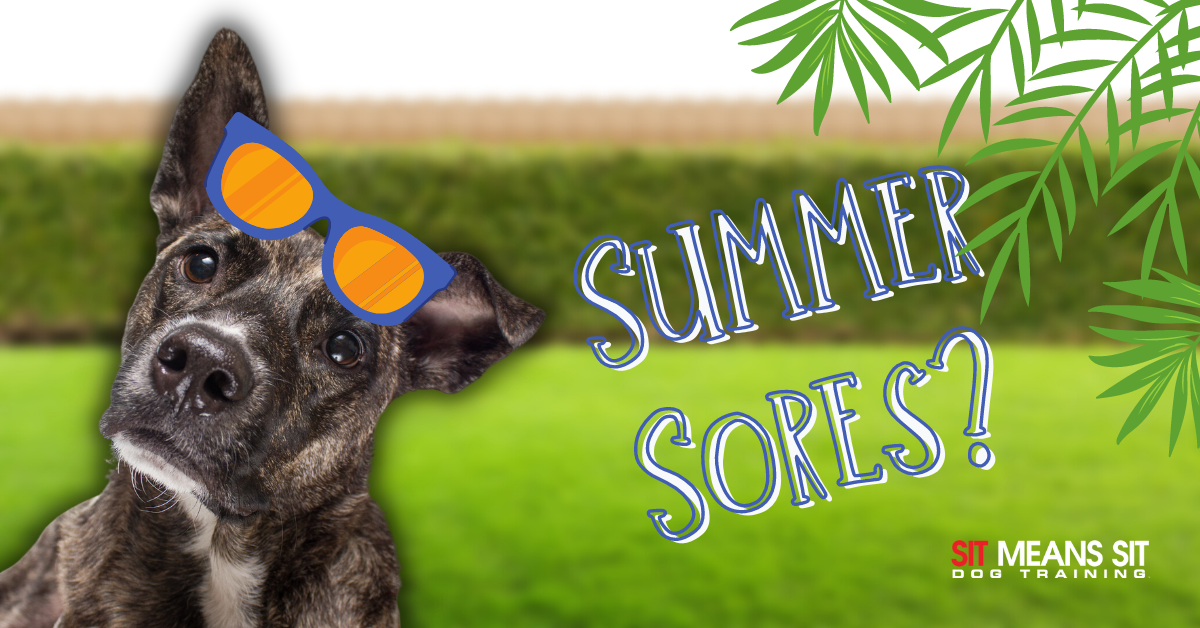
Should I Be Worried About My Dog Getting Summer Sores?
While your pup can get hot spots at any time of the year, they are more common in hot and sticky weather, being called “summer sores”. There are multiple treatments that you can do at home as long as the infection is not too serious. First, you need to be able to identify them in order to treat them.
What is a Summer Sore?
These are common infections that occur when your pup chews, licks, or scratches themselves. This causes the skin to become red, itchy, and infected. These sores can be spotted as the skin becomes crusty and tightened. Additionally, hair loss may occur around the site and will likely be painful for your pooch if it is touched.
What Causes Summer Sores?
Though the sores are caused by your pup chewing and licking themselves, they start this behavior due to skin irritation. This irritation can be from insect bites, skin allergies, matted hair, heavy or dense coats, moisture on the surface of the skin, or excessive humidity.
The location of the sore may also help you or your vet determine the cause. If the spot is around the hip, it could reveal fleas, hip arthritis, or anal gland infection. Or if the spot appears near your pup’s ear, this could indicate an ear issue, an allergy, or a nerve or dental irritation.
How to Treat Sores
If a summer sore is identified early, it is possible to treat it at home. Home treatments include topical sprays, medicated shampoos, and herbal therapies. It is important to verify that the product is pet-safe and can be approved by your vet. However, it is important to not use topical products for humans on your four-legged friend. These can be toxic to dogs when licked and ingested.
If the affected area is small, use grooming clippers to trim the fur that is covering the area. It is important for the wound to breathe so the air and medicine can reach the area. Because of this, do not wrap or cover the area to allow it to breathe. Additionally, apply a warm, moist compression to the area for 5-10 minutes at least three times a day. This promotes circulation and keeps the area clean. Always use pet-safe topical treatments after the area has dried fully. You will also want to keep your pal from continuing to lick or chew at the affected area. This means unfortunately means you will have to use the cone of shame. Here are some more comfortable cone options for your pup.
Most importantly, you need to determine what is causing the itching and irritation in the first place. By figuring out the source of the itching, you will be able to help your furry friend make a faster recovery. Additionally, the more serious the sore the more likely you should seek vet attention. If the spot is growing in size and becoming more painful, it is time to see the vet.
How to Prevent Sores
Firstly, be sure that you are engaging in the appropriate flea control. This is the foundation of itch prevention. You should also fully dry your pooch after swimming or bathing. With that being said, be sure to keep your furry friend groomed on a regular basis. You should have a high-quality brush such as this one to keep your pup’s coat from matting and causing itching.
Also, including fatty acids in your pal’s diet will keep their coat healthy. A healthy coat will keep your pal’s skin healthy and prevent itching. Here is how to keep your furry friend’s coat healthy. Additionally, keep your dog exercised and stimulated with fun games.
Don’t let the fear of summer sores stop you and your best friend from engaging in summer fun! As long as you are actively taking steps to prevent sores and monitoring your pooch for any signs of sores, you will be able to catch and treat these infections early. Now get out there and enjoy the summer sun!
